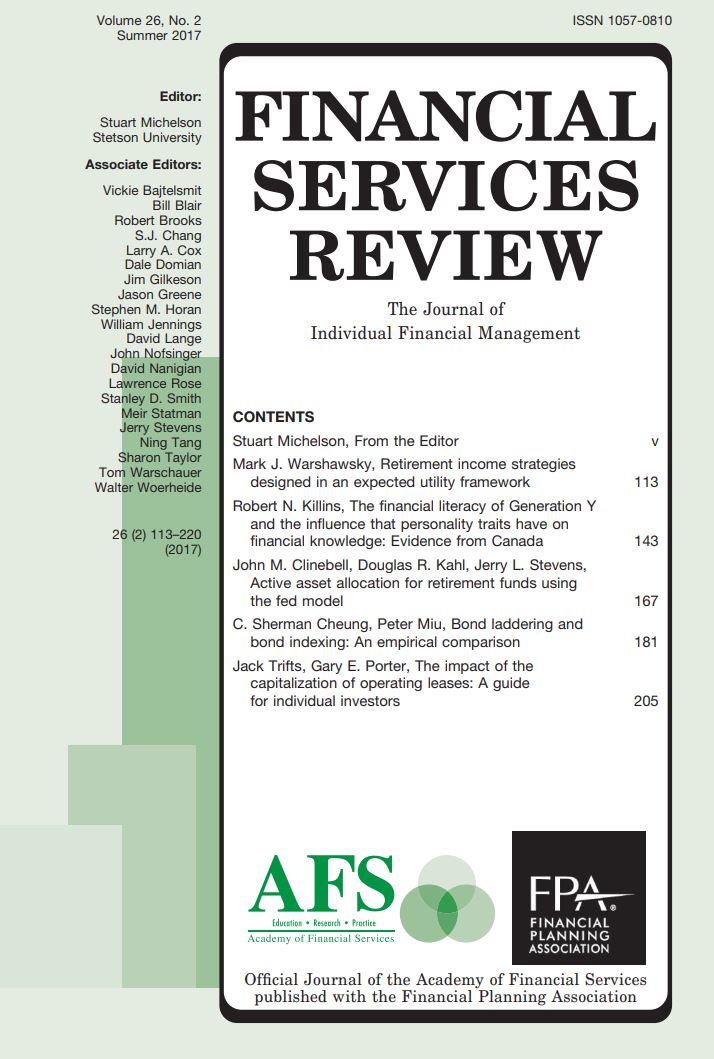Bond laddering and bond indexing
An empirical comparison
DOI:
https://doi.org/10.61190/fsr.v26i2.3307Keywords:
Ladder bond portfolio, Passive bond investmentsAbstract
Bond laddering and bond indexing have been widely accepted approaches to bond investing among retail investors. However, bond laddering has virtually been ignored in both the academic literature and most of the popular investment textbooks. One thing both approaches have in common is that they are passive strategies with no attempt whatsoever to beat the market. There are many unresolved issues about the two seemingly similar approaches. First, which approach should an investor favor? Is there any room for both to be used at the same time? Second, if an investor decides to use a ladder, what is the appropriate term to maturity for the ladder? There is hardly any theoretical or empirical guidance as to which is a better approach to use and the right term of a ladder. The relative attractiveness of the above two approaches are empirically examined in this study. We identify conditions that favor one over the other. Conditions under which both instruments should be held within an optimal portfolio are also identified. We also identify conditions in which a longer term ladder is more appropriate than a shorter term ladder.
Downloads
Published
How to Cite
Issue
Section
License
Copyright (c) 2014 Academy of Financial Services

This work is licensed under a Creative Commons Attribution-NonCommercial 4.0 International License.
Author(s) retain copyright and grant the Journal right of first publication with the work simultaneously licensed under a Creative Commons Attribution-NonCommercial 4.0 International License that allows to share the work with an acknowledgment of the work's authorship and initial publication in this Journal.
This license allows the author to remix, tweak, and build upon the original work non-commercially. The new work(s) must be non-commercial and acknowledge the original work.


